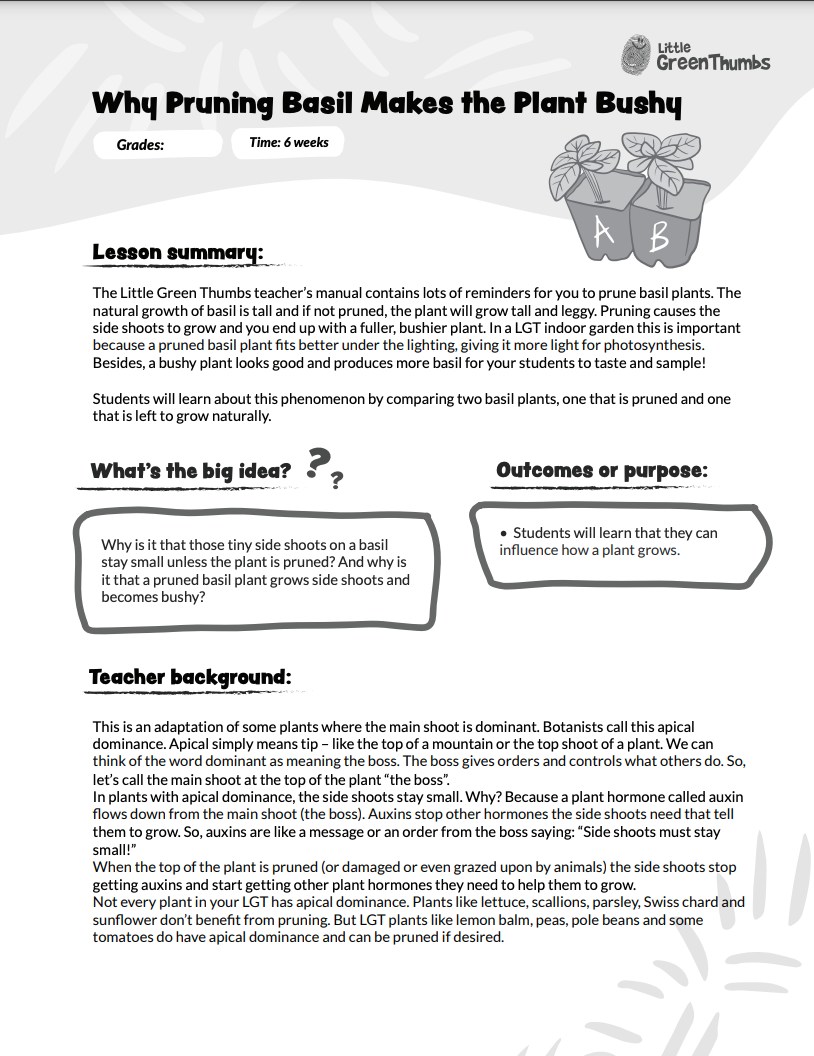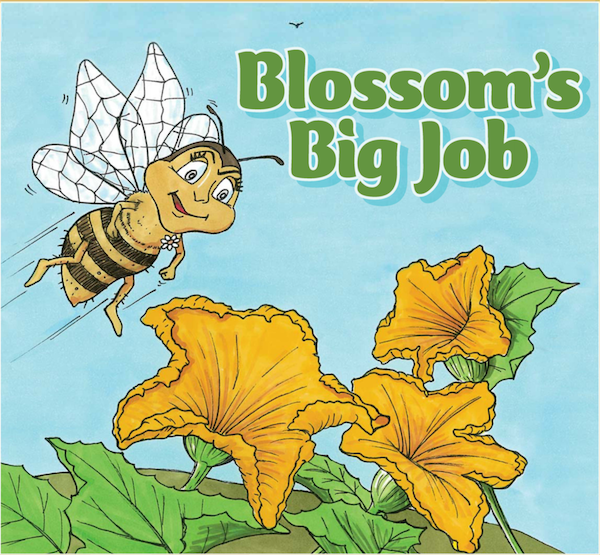Experiment: Why Pruning Basil Makes the Plant Bushy
Grades: any
The Little Green Thumbs teacher’s manual contains lots of reminders for you to prune basil plants. The natural growth of basil is tall and if not pruned, the plant will grow tall and leggy. Pruning causes the side shoots to grow and you end up with a fuller, bushier plant. In a LGT indoor garden this is important because a pruned basil plant fits better under the lighting, giving it more light for photosynthesis. Besides, a bushy plant looks good and produces more basil for your students to taste and sample!
Students will learn about this phenomenon by comparing two basil plants, one that is pruned and one that is left to grow naturally
Time: 6 weeks
This is an adaptation of some plants where the main shoot is dominant. Botanists call this apical dominance. Apical simply means tip – like the top of a mountain or the top shoot of a plant. We can think of the word dominant as meaning the boss. The boss gives orders and controls what others do. So, let’s call the main shoot at the top of the plant “the boss”. In plants with apical dominance, the side shoots stay small. Why? Because a plant hormone called auxin flows down from the main shoot (the boss). Auxins stop other hormones the side shoots need that tell them to grow. So, auxins are like a message or an order from the boss saying: “Side shoots must stay small!”
When the top of the plant is pruned (or damaged or even grazed upon by animals) the side shoots stop getting auxins and start getting other plant hormones they need to help them to grow. Not every plant in your LGT has apical dominance. Plants like lettuce, scallions, parsley, Swiss chard and sunflower don’t benefit from pruning. But LGT plants like lemon balm, peas, pole beans and some tomatoes do have apical dominance and can be pruned if desired.


